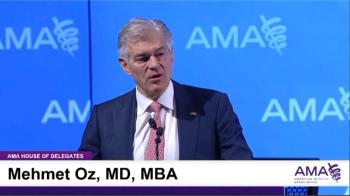
Opioid deaths decline, but advocates say crisis progress is at risk from lower federal spending
Key Takeaways
- Opioid overdose deaths decreased by 27% in 2024, saving over 81 lives daily, due to improved public health interventions.
- Potential federal healthcare budget cuts could jeopardize progress in combating the opioid crisis, experts warn.
Trump administration tallies ‘staggering cost’ of opioid epidemic as lawmakers ponder budget.
Opioid overdose deaths dropped 27% nationally last year, according to provisional figures from the U.S. Centers for Disease Control and Prevention (CDC).
The administration of President Donald J. Trump has made it a continuing priority to fight the flow of illegal and deadly fentanyl into the country. But experts warn looming financial cuts to federal health care programs could hurt efforts to counter
On May 14, CDC’s National Vital Statistics System published figures showing a nearly 27% decrease in predicted overdose deaths in 2024, compared with 2023. That decline suggests more than 81
“Since President Trump declared the opioid crisis a public health emergency in 2017, congressional support has enabled CDC to expand critical data systems and strengthen overdose prevention capacity across all states,” the CDC statement said. “These investments have empowered us to rapidly collect, analyze, and share actionable data — enabling communities to better understand the specific drivers of overdose in their area and tailor prevention strategies to meet their unique local needs. Since late 2023, overdose deaths have steadily declined each month — a strong sign that public health interventions are making a difference and having a meaningful impact.”
Overdose remains the leading cause of death for Americans aged 18 to 44 years, which underscores the need to continue progress against the opioid crisis, the CDC statement said.
Still an active fire
There were decreases both in opioid and cocaine and psychostimulant fatalities as well, said Sharon Gilmartin, MPH, executive director of the
Regarding opioid deaths, almost every state saw a decrease. Louisiana, Michigan, New Hampshire, Ohio, Virginia, West Virginia, Wisconsin and Washington, D.C., experienced declines of 35% or more, and two states, South Dakota and Nevada, posted slight increases, Gilmartin said.
“This is notable in and of itself, and then really, because we've seen fatalities trending upwards for nearly a decade, that is the first time since the epidemic started that we are seeing a downward trend,” Gilmartin said. “And it's not just any downward trend,” she added, with a difference of 30,000 lives in just one year, saving people who are parents and friends of others.
“Obviously, this is really promising news, but this progress was not made by mistake, and it was not made overnight,” she said. “It was the result of dedicated, coordinated investments in governmental public health that allowed for a national strategy between our federal state and local agencies as well as our community-based organizations.”
The CDC’s National Center for Injury Prevention and Control is the backbone of the national response to the overdose crisis, with data, money, staff and expertise, Gilmartin said. Cutting the workers and budget puts those gains at risk, with the nation more vulnerable to overdose, she said.
The CDC has laboratory access and behind-the-scenes communications that allow for tracking drugs, Gilmartin said. She used the example of the spread of Xylazine, the animal tranquilizer known as “tranq” that can cause death or skin wounds to users.
The progress is real, but it also is fragile, Gilmartin said. Her question to Kennedy would be: “Why are we pulling the firefighters off the scene while the fire is still burning?”
“Even though we’re down to 80,000 deaths a year for opioids, that is 80,000 lives,” she said. “When this started, it was 10,000 in 2010. We have a lot of work to do. I cannot be more emphatic with this.”
Medicaid as a tool to fight addiction
In addition to Kennedy’s dialogue with representatives and the Senate Health, Education, Labor & Pensions Committee, this week, the House Energy & Commerce Committee voted on the budget reconciliation bill that opponents say is a major threat to Medicaid funding.
That could be a major step backward in efforts to treat addiction and promote recovery, said Stephen M. Taylor, MD, MPH, DFAPA, DFASAM, president of the American Society of Addiction Medicine (ASAM).
“In particular, we are greatly concerned that proposals to impose cost-sharing requirements on Medicaid expansion enrollees — including those with substance use disorders — could make addiction-related treatment services even more costly than cheaper tobacco products, alcohol, and illicit drugs,” Taylor said in
The Committee’s bill text included an exemption from proposed work requirements for people battling substance use disorder, and ASAM’s leaders deeply appreciate that, he said. But there are serious concerns about how exemptions would be implemented.
“Time and energy spent on excessive bureaucratic red tape and surveillance could be better used to ensure that more Americans with low incomes can readily access and afford the medical care they need and deserve, including through programs like Medicaid expansion,” Taylor said.
“Medicaid Expansion is a powerful weapon against addiction and the drug cartels, because it can reduce demand for illicit substances and help more Americans with addiction enter treatment,” he said. “It must be protected, especially as we continue to lose tens of thousands of lives each year to the nation’s addiction and overdose crisis.”
Staggering cost
Apart from the human cost, the opioid epidemic has a “staggering” financial cost, according to
In 2023, illicit opioids, primarily fentanyl, cost Americans an estimated $2.7 trillion, or 9.7% of the nation’s gross domestic product, as measured in December 2024 dollars. The breakdown:
- $1.1 trillion, or 41%, due to deaths
- $1.34 trillion, or 49%, due to lost quality of life
- $277 billion, or 10%, to costs for health care, reduced labor productivity and crime-related expenses. Within that, the cost to the health care system was $107 billion.
The White House article included a methodology for calculating the costs.
“The enormous economic cost of the illicit opioid epidemic to Americans, estimated at $2.7 trillion in 2023 alone, underscores the urgent need to control the flow of lethal drugs pouring in from foreign countries,” the White House statement said. “The human suffering and financial burden inflicted by this epidemic are unsustainable.”
Newsletter
Stay informed and empowered with Medical Economics enewsletter, delivering expert insights, financial strategies, practice management tips and technology trends — tailored for today’s physicians.

















